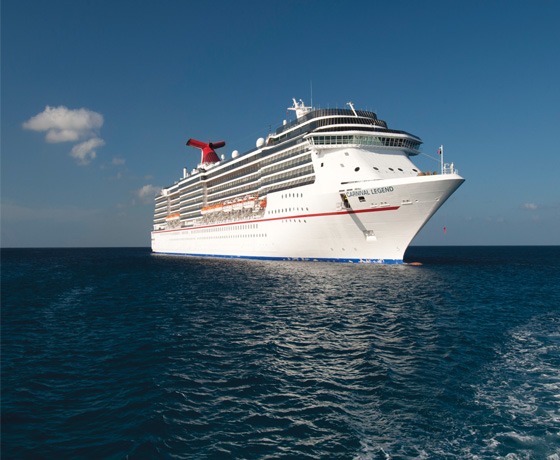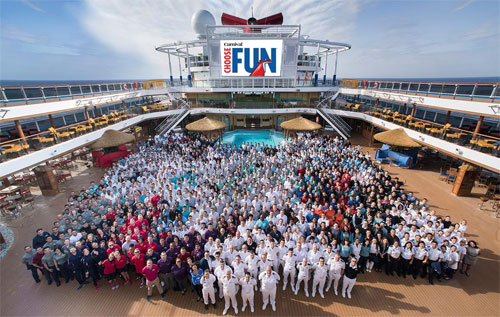
You've likely heard about the environmental impacts of cruise ships. Now you want to know what you can do. Here are some facts about cruise ship pollution that might surprise you. Learn more about the environmental impact, the marine life, the local economies, and the sources of pollution. We hope you will be better informed about the effects of pollution from cruise ships. But what about the actual cost? Although you cannot ignore it, it is vital to understand the facts.
Marine life
A cruise ship can produce large amounts of waste that enters the ocean, negatively affecting marine life. These solid wastes end up often in the stomachs and bellies of marine life and whales. These foreign objects can choke or destroy their digestive systems. Noise pollution can also impact whale behavior. While water pollution may cause the oceans to lose oxygen, it can also lead to disruptions in whale behavior. These can have severe consequences for marine life. Fortunately, there are ways to minimize cruise ship pollution.

Coral reefs have been damaged
The cruise industry often overlooks the dire situation of coral reefs, and the people who live within them. Many hectares of coral have been destroyed and ports and construction projects are necessary for cruise ships. Dredging, or sifting through silt, is necessary for the ships to dock safely and deeper. Dredging, which is the removal of a portion or all of the reef from the seawater that isn't clear enough for corals to survive, can be necessary.
Local economies are impacted
It is a major source for pollution that cruise ships emit. Recent studies show that a single cruise ship can emit as much particulate matter as 700 trucks. Shipping emissions are responsible for a staggering 40,000 to 100,000 deaths each year in Britain. Even though cruise ships are a small fraction of the global shipping fleet's total, their pollution can have a substantial impact on coastal economies. Shipboard incinerators can also contribute to the pollution problem, as they burn enormous amounts of waste and create ash.
Polluting factors
Marine Pollution Bulletin published a paper recently that revealed the extent to which the cruise industry has had an impact on the environment. It found that a cruise liner carrying two thousand seven hundred passengers annually produces more than one tonne of rubbish, much of which is illegally disposed of or incinerated at sea. The cruise industry is not only damaging the environment but can also cause problems for local communities and passengers.

EPA report regarding cruise ship pollution
On January 31, 2008 the EPA published a detailed response to the public docket concerning the Cruise Ship Discharge Assessment Report. This document details the assessment of five major waste streams that cruise ships produce: sewage (graywater), oily bilgewater and hazardous waste. The draft report found that cruise ships contribute to over 3,000 tons of waste per week. Although it may seem like a lot of trash, the actual amount of waste generated by cruise ships is substantial.
FAQ
What do you get on your cruise?
Fun is the most important thing. You don't need to go overboard - just enjoy yourself.
There are plenty of activities available for everyone. There are always people who want to talk to you if your bored.
Cruising is all in the enjoyment of yourself and relaxation. It's not about doing everything possible to ensure you see as much as possible.
There are many types of cruises available. They range from shorter trips across Europe to more extended journeys across the Pacific. The length of the trip depends on what you want to accomplish during your vacation.
Is there something else I should learn before I go on a vacation?
You should know many things before going on your first cruise. Remember that you'll be traveling with others. Do not be harsh about these people. You will never know how they feel about a situation. Keep in mind that you will be dining and drinking with strangers. You should dress appropriately. Do not wear shorts or tank tops on deck. Wear comfortable clothes that won't get dirty. Extreme temperatures are possible. Make sure you pack plenty of sunscreens. If you plan to spend some time outdoors, be sure to pack a hat with sunglasses and a light jacket. Remember that you are responsible. Do not drink and drive.
What is the all-inclusive cruise ship?
Cruise ships are not all-inclusive because they do not include meals for passengers with dietary restrictions. They also do not provide room service, laundry services, or other amenities such as pools, gyms, spas, etc.
Some cruise lines offer "all-inclusive", which covers everything but alcohol. These packages include airfare, hotel accommodations (accommodation), entertainment, and beverages.
Statistics
- The line estimates savings of 50% when you purchase this bundle. (travel.usnews.com)
- For an example of savings, Royal Caribbean offers up to a 40% discount with a dining package. (travel.usnews.com)
- If you're traveling alone, you may also need to factor in a single supplement, adding up to as much as 100% of the cruise fare. (travel.usnews.com)
- In addition, 10 to 15 percent gratuity is typically added to bar bills — for alcohol and soft drinks — and gratuities are applied to spa treatments. (cruiseline.com)
External Links
How To
How to avoid becoming seasick during a cruise
You can avoid seasickness by wearing a cap while on cruise. A wide-brimmed hat helps prevent motion sickness by keeping the head from moving too much.
Also, a cap keeps water off the skin and helps to reduce the moisture content of the air. This allows people who are prone to dizziness from inhaling moist air to breathe more easily.
Another tip is to drink lots of fluids. Avoid alcohol or caffeine. These drinks dehydrate the body causing more fluid to move around in the stomach. The amount of salt in the bloodstream can be reduced by drinking enough liquids. Salt causes the body to retain water which leads to nausea.
If you do feel nauseous, try eating something salty. Salty foods increase the production of hydrochloric, which helps to break down food.
There are medication options available to help seasickness. You should be aware that side effects can include dry mouth and constipation as well as headaches.